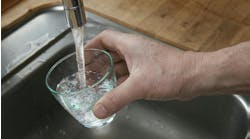SOUTHAMPTON, N.Y. — Following the fire that destroyed the home of the David Dubin family, who are members of the Hamptons Green Alliance, last year, Richard Stott of Steelbone Design Company and Flynn Stott Architects is spearheading a team to rebuild the home, using state-of-the-art materials, procedures and techniques, and experimental building ideas, which is believed to be a first of its kind — an energy conserving house that is expected to set the standard for constructing carbon-neutral homes in the future.
Members of the HGA, including building contractors and suppliers in the Hamptons, will carry out the rebuilding effort being led by Stott, Craig Lee of Lee Architecture, Frank Dalene and Bob Morsch of Telemark Inc., and Roy Dalene and his son, Tim Dalene, of Telemark Inc.
The group, working with the Long Island Chapter of the U.S. Green Building Council, intends to seek LEED Platinum certification for the house as well as implement a methodology developed by Dalene that can definitively calculate the carbon footprint of the actual materials, products and businesses that are used in construction, thereby establishing a true carbon-neutral status for the construction of the home. Furthermore, because the house is being rebuilt, the existing energy consumption records prior to the fire will be utilized to determine the actual difference in energy consumption.
“We believe this is one of the most significant aspects of the project,” said Dalene. “Normally, when homes or buildings are built for LEED certification there is not the opportunity to draw an actual apples-to-apples comparison of energy usage. Because there is this specific energy history, we will be able to quantify and prove the energy savings.”
While LEED certification has become a recognized standard of green building, the emerging area of excitement, according to Dalene, is the building of net-zero energy homes.
“These are homes that do not require more energy to operate than they consume,” said Dalene. “This would include methods such as generating electricity through the use of solar power — photovoltaic and wind generators for electricity and solar thermal for hot water.”
Ground water source heat pump technology will also be used at the Dubin home for heating and cooling.
“In order to minimize the amount of energy required to heat or cool a home, we are designing the structure with advanced high-performance building strategies that will take advantage of passive and active heating and cooling design techniques,” said Dalene. “When the electric production from photovoltaic wind generators exceeds electricity usage, the electric meter turns backward. When electricity usage exceeds production the electric meter turns forward. The goal then is that the net result will be zero.”
In order to obtain the carbon neutrality certification that is planned for the home, the HGA turned to Dalene to utilize an indexing system and methodology that he has created to establish an objective and scientific way of measuring the carbon footprint associated with the production of all manufactured products.
“To our knowledge no one has accurately constructed a home with a carbon-neutral footprint because the science did not exist until now,” Dalene said.
The Dubin house is expected to be the pilot program for establishing a standard in the way a carbon footprint can be scientifically and accurately measured in the manufacturing of a home.
“We will provide the science and certify the carbon-neutral status of this home utilizing the methodology that I developed,” said Dalene.
He noted that this system has been reviewed and well received by world wide experts in the environmental field, who have been at the forefront of the reduction of greenhouse gas movement. The team will further calculate the carbon footprint of the home’s operation going forward with the goal of certifying the carbon neutrality based on the home’s lifecycle.
“While this project is a groundbreaking endeavor, we believe documenting this effort will create a model for others to follow or adopt as best practices in the future,” Dalene said.

